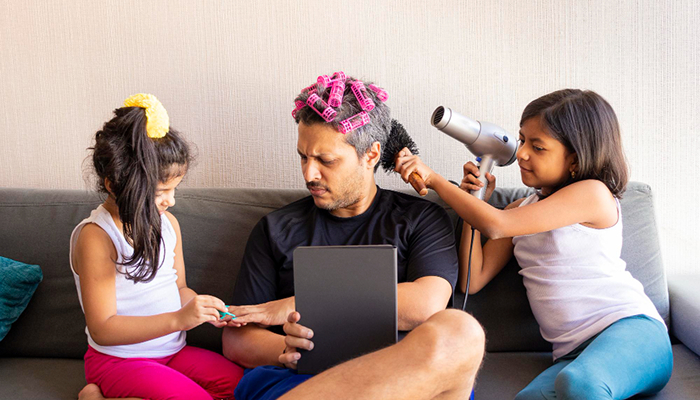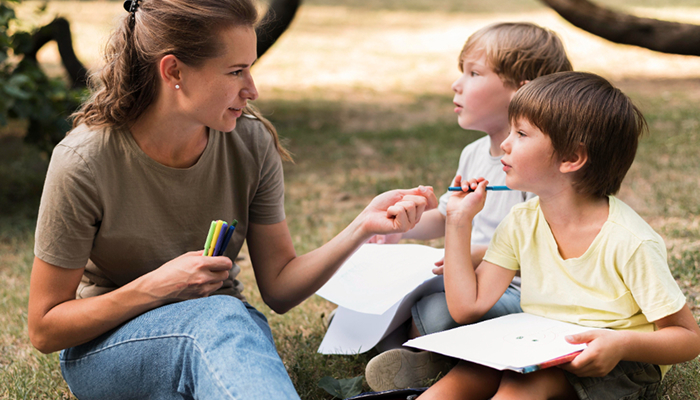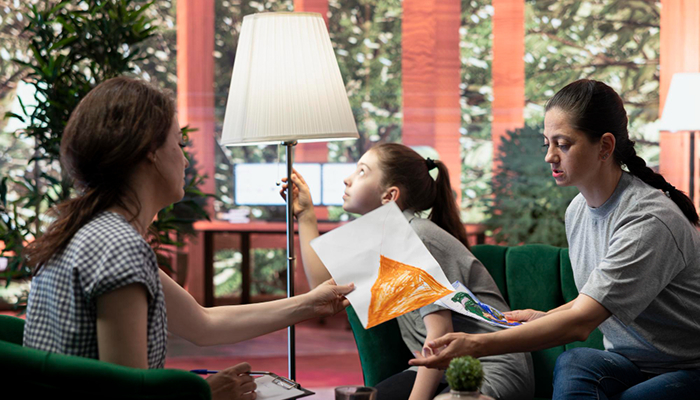We are all different, whether it comes to elderly individuals, adults, or children. If you’re a parent, you’ve likely noticed that children differ from one another. Their differences may be in their unique personalities, favorite toys or food, and also in how they connect with you. One minute, your child might cling to your leg like a koala; the next, they’re off exploring the world without a backward glance.
One of the most important roles for parents and caregivers is to establish a secure, loving, and supportive bond with one’s child. This bond, known as attachment, provides the foundation for how children learn to trust, communicate, and form relationships throughout their lives. While every child is different, psychologists have identified distinct attachment styles in children that shape their emotional development and future relationships.
Understanding these attachment styles in children can help parents recognize their child’s needs, respond with care, and seek support when necessary. If you’re considering psychotherapy for your child or simply want to enhance your parenting skills, this guide will provide valuable insights.
What Are Attachment Styles in Children?
Attachment theory, first developed by psychologist John Bowlby and later expanded by Mary Ainsworth, explains how early relationships with primary caregivers shape children’s emotional and social development, laying the foundation for their emotional well-being and relationships later in life. Research shows that these early connections influence everything from self-esteem to how children handle stress.
Based on a child’s early experiences, they develop one of four attachment styles:
1. Secure Attachment
2. Anxious-Ambivalent Attachment (Insecure)
3. Avoidant Attachment (Insecure)
4. Disorganized Attachment (Insecure)
Each one reflects how your child feels about relying on you for comfort and safety. The good news? You don’t need a psychology degree to recognize these patterns—and you can support your child no matter their style.
How to Recognize Different Attachment Styles in Children?
1. Secure Attachment Style
| Origin | Caregivers consistently respond to their child’s needs with warmth, sensitivity, and reliability. |
|---|---|
| Common Signs | These children feel safe and confident in their relationships. They’re comfortable exploring their environment, knowing their caregiver is a reliable source of comfort when needed. |
| How to Support | Be present, emotionally available, and responsive to your child’s cues. Celebrate their independence while offering reassurance when they seek comfort. |
2. Anxious-Ambivalent Attachment Style
| Origin | Caregiver’s responses are inconsistent—sometimes attentive, other times unavailable or dismissive. |
|---|---|
| Common Signs | These children often feel uncertain about their caregiver’s availability. They may cling to their parent, struggle with separation, and have difficulty calming down even after reassurance. |
| How to Support | Build trust by being consistently responsive. Set clear routines and boundaries to help your child feel secure. |
3.Avoidant Attachment Style
| Origin | This style can form when caregivers are emotionally distant or dismissive of their child’s needs. |
|---|---|
| Common Signs | Children with an avoidant attachment may appear independent or detached. They often avoid seeking comfort from their caregiver, even when upset. |
| How to support | Encourage emotional expression by validating their feelings and creating a safe space for them to open up. |
4. Disorganized Attachment Style
| Origin | Disorganized attachment is often linked to trauma, neglect, or a caregiver’s unpredictable behavior. |
|---|---|
| Common Signs | These children may display confusing or contradictory behaviors, such as approaching their caregiver for comfort but then pulling away. They often struggle with regulating their emotions. |
| How to support | Seek professional help from a therapist who specializes in childhood trauma. Provide a stable, nurturing environment to help your child feel safe. |
Recognizing your child’s attachment style isn’t about labeling them; it’s about understanding their emotional world so you can meet them where they are.
Studies show that early support for attachment styles in children can:
- boost resilience & self-esteem,
- help develop strong social skills,
- help them perform better academically,
- support emotion regulation,
- prevent mental health challenges like anxiety or depression down the road.

Fostering Secure Attachment in Children: A Guide for Parents
Attachment styles are not set in stone. With awareness and effort, parents can help their children develop healthier patterns of connection. By understanding how to build a secure attachment in children, you’re taking a meaningful step toward supporting your child’s growth. Here are practical, research-backed strategies to help you build a strong, secure connection with your little one:
1. Be Responsive and Attuned to Your Child’s Needs
- Children thrive when they feel seen, heard, and understood.
- Responding promptly and consistently to your child’s needs—whether they’re hungry, tired, or seeking comfort—helps them develop trust in you as their caregiver:
- Pay attention to their cues, like facial expressions, body language, or cries, and respond with warmth and care.
- It’s about showing up consistently and letting them know they can rely on you.
2. Create a Safe and Predictable Environment
-
- Routines and predictability are key to helping children feel secure:
- Establishing consistent daily rhythms for meals, naps, and playtime provides a sense of stability.
- Ensure your home is a safe space where your child can explore freely without fear of harm or harsh criticism:
- Children who know what to expect feel more confident and less anxious.
- Routines and predictability are key to helping children feel secure:
3. Validate Their Emotions
- Children experience big emotions that they may not understand. They need your help to make sense of these emotions.
- When your child is upset, try saying things like, “I see you’re feeling sad because your toy broke. That must be really hard.”
- Validating their feelings—rather than dismissing them—helps them feel understood and teaches them that their emotions are valid and manageable.
4. Show Warmth and Affection
- Hugs, soothing voice, gentle touches, and eye contact communicate love and safety to your child.
- Even during moments of discipline, maintaining a calm and loving demeanor helps reinforce that your relationship is a source of comfort, not fear.
5. Be a Secure Base for Exploration
-
- As your child grows, they’ll naturally want to explore the world around them.
- Encourage this curiosity by being their “secure base”—a safe haven they can return to when they feel overwhelmed or scared:
- Avoid being overly controlling or intrusive during play.
- Let them take the lead while staying nearby for support.

6. Model Healthy Emotional Regulation
- Children thrive when they feel seen, heard, and understood.
- If you make a mistake, like losing your temper, take the opportunity to model repair.
- Apologize and explain what happened: “I’m sorry I yelled earlier. I was feeling frustrated, but I shouldn’t have raised my voice.”
- This shows them that relationships can withstand challenges and that it’s okay to make mistakes.
7. Encourage Independence While Staying Connected
- As your child grows, they’ll naturally seek more independence.
- Support this by allowing them to make age-appropriate choices, like:
- picking out their clothes.
- deciding what game to play.
- Remember to stay emotionally connected and available. Balancing independence with connection helps them feel both capable and loved.
8. Be Present and Patient
- In the busyness of daily life, make an effort to spend quality one-on-one time with your child, free from screens or other interruptions.
- Whether it’s reading a book, playing a game, or simply talking, these moments of undivided attention help your child feel valued and secure.
9. Reflect on Your Own Attachment History
- Your own experiences as a child can influence your parenting style.
- If you find yourself struggling to connect with your child or notice patterns you’d like to change, consider seeking support:
- Therapy or parenting workshops can help you address unresolved issues and break negative cycles, creating a healthier dynamic for your family.
10. Seek Professional Support When Needed
- If you notice signs of insecure attachment in your child—such as extreme clinginess, avoidance, or difficulty regulating emotions—don’t hesitate to ask for help.
- A child psychologist or counselor can provide guidance and tools to strengthen your bond and address any challenges.
If you’re feeling overwhelmed or unsure where to start, remember that you don’t have to do this alone. We’re here to support you and your family every step of the way.
Whether you’re looking for parenting resources, therapy, or simply someone to talk to, we’re committed to helping you build a strong, loving connection with your child.
Let’s work together to create a foundation of security, love, and resilience for your child—because every child deserves to feel safe, seen, and supported.


